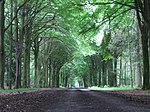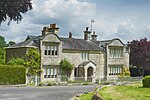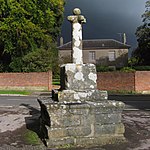Baverstock Juniper Bank
Baverstock Juniper Bank (grid reference SU035336) is a 2.6 hectare Biological Site of Special Scientific Interest to the north of the village of Baverstock in Wiltshire, England. Baverstock Juniper Bank is within the Cranborne Chase and West Wiltshire Downs Area of Outstanding Natural Beauty. The ungrazed chalk grassland is home to over 500 bushes of the lowland juniper, Juniperus communis, subspecies communis. Their seeds attract flocks of finches and yellowhammers to the location as a feeding site in winter. Uncommon species such a horseshoe vetch (Hippocrepis comosa) and pyramidal orchid are to be found at the SSSI. Butterflies such as the brimstone, speckled wood and small heath have been seen visiting the site. The site was notified in 1971.
Excerpt from the Wikipedia article Baverstock Juniper Bank (License: CC BY-SA 3.0, Authors).Baverstock Juniper Bank
Geographical coordinates (GPS) Address Nearby Places Show on map
Geographical coordinates (GPS)
| Latitude | Longitude |
|---|---|
| N 51.10169 ° | E -1.95139 ° |
Address
Firfields
SP3 4SQ , Barford St. Martin
England, United Kingdom
Open on Google Maps










